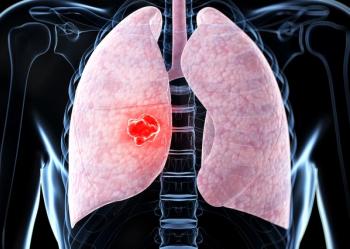
Oncology NEWS International
- Oncology NEWS International Vol 4 No 10
- Volume 4
- Issue 10
Institute of the Future Urges US to Increase Spending on Basic R&D
WASHINGTON-US spending on research and development has fallen over the last 20 years from 3% to 2.6% of the Gross Domestic Product, and the United States now ranks behind Japan and Germany in R&D spending, according to a study released by the Institute for the Future, a California-based think tank sponsored by 23 research-oriented pharmaceutical companies.
WASHINGTON-US spending on research and development has fallenover the last 20 years from 3% to 2.6% of the Gross Domestic Product,and the United States now ranks behind Japan and Germany in R&Dspending, according to a study released by the Institute for theFuture, a California-based think tank sponsored by 23 research-orientedpharmaceutical companies.
The report, entitled the Future of America's Research-IntensiveIndustries, stressed that both the government and private industrymust increase funding for basic R&D if the United States isto retain its standard of living and global competitiveness.
It urges the development of a new system of support for R&D,"built not on the fear that drove Cold War R&D policies,but on the premise that R&D provides the best hope for improvingthe quality of life for all our citizens."
At a press conference on Capital Hill announcing the release ofthe report, J. Ian Morrison, PhD, president of the Institute forthe Future, outlined five steps the country needs to take to increaseR&D efforts (see table ).
Mary L. Good, PhD, under secretary for technology, Departmentof Commerce, said that "proposed congressional cuts wouldeliminate at least 35,000 scientists and engineers from R&D,closing university and private sector labs and research facilitiesacross the country."
Dr. Good warned that if we "dissolve teams of scientistsand engineers, discourage the best and brightest from pursuingtechnical careers, and close our world class facilities, we maynever be able to rebuild our capabilities."
She added that the US currently ranks 28th in the percentage ofpublic R&D funding dedicated to civilian research, just aheadof the Czech Republic.
Richard J. Kogan, president and chief operating officer of Schering-PloughCorporation, said that past R&D has made the United Statesa worldwide technological leader in medicine. He pointed out that"it took 14 years of R&D before my company made a pennyon recombinant alpha interferon, which is now used to treat 16oncologic and viral diseases."
The pharmaceutical industry is currently responsible for morethan 90% of all new US drug discoveries, he said. "The burningissue now is not only whether the industry can continue bringingnew products to patients to treat unconquered diseases, but alsowhether we can continue covering the expenditure for leading-edgeresearch."
The annual medical costs of only seven major uncurable diseasesaccount for about half of today's health-care bill, he said. However,many of those diseases are within reach of effective pharmaceuticalcontrol or cure. "Medical innovation is the best long-termsolution for providing cost-effective quality care."
Meeting the Population Crisis
Leon Lederman, PhD, Nobel Laureate Physicist, and director emeritus,Fermi National Accelerator Laboratory, Batvia, Ill, said thatR&D is needed to face the crisis in population growth in thenext 50 years and the subsequent need for energy and food to supportthat growth without destroying the environment.
Dr. Lederman emphasized that the flow of young people into thesciences is crucial for R&D, and yet that flow has droppedoff recently as the news of downsizing in the science industriesreaches students in the universities.
He believes that we need to encourage more of our young peopleto pursue graduate degrees and commented that "if it werenot for foreign students, our graduate schools would be half empty."
Five Steps to Increase R&D
1. Protect and maintain the amount that the government now spendson research.
2. Increase tax incentives to encourage private investment inR&D.
3. Create a regulatory environment that fosters innovation byreducing government-generated risk of litigation.
4. Protect intellectual property rights so that inventors andinvestors alike will receive a return on their R&D ideas andinvestments.
5. Maintain a healthy environment for cooperative research anddevelopment between private and government programs, joint ventures,and partnerships that cut across institutional and internationalboundaries.
From a presentation by J. Ian Morrison, president, Institutefor the Future, Menlo Park, Calif.
Articles in this issue
about 30 years ago
New Markers May Help Predict Course of Prostate Carcinomaabout 30 years ago
Needle Exchange Programs Lower HIV Risk: Panelabout 30 years ago
Computerized Database Could Lead to Improved Staging of Lung Cancerabout 30 years ago
Centocor Wellness Program Includes Mobile Mammography Vanabout 30 years ago
Yeast-Derived GM-CSF (Leukine) Cleared for Use in Older AML Patientsabout 30 years ago
Spiral CT Offers Better Detection of Disease, More Accurate Stagingabout 30 years ago
New Colon Ca Agent Is Available in Franceabout 30 years ago
New Dual Antibiotic Effective Against Changing Hospital FloraNewsletter
Stay up to date on recent advances in the multidisciplinary approach to cancer.

















































































